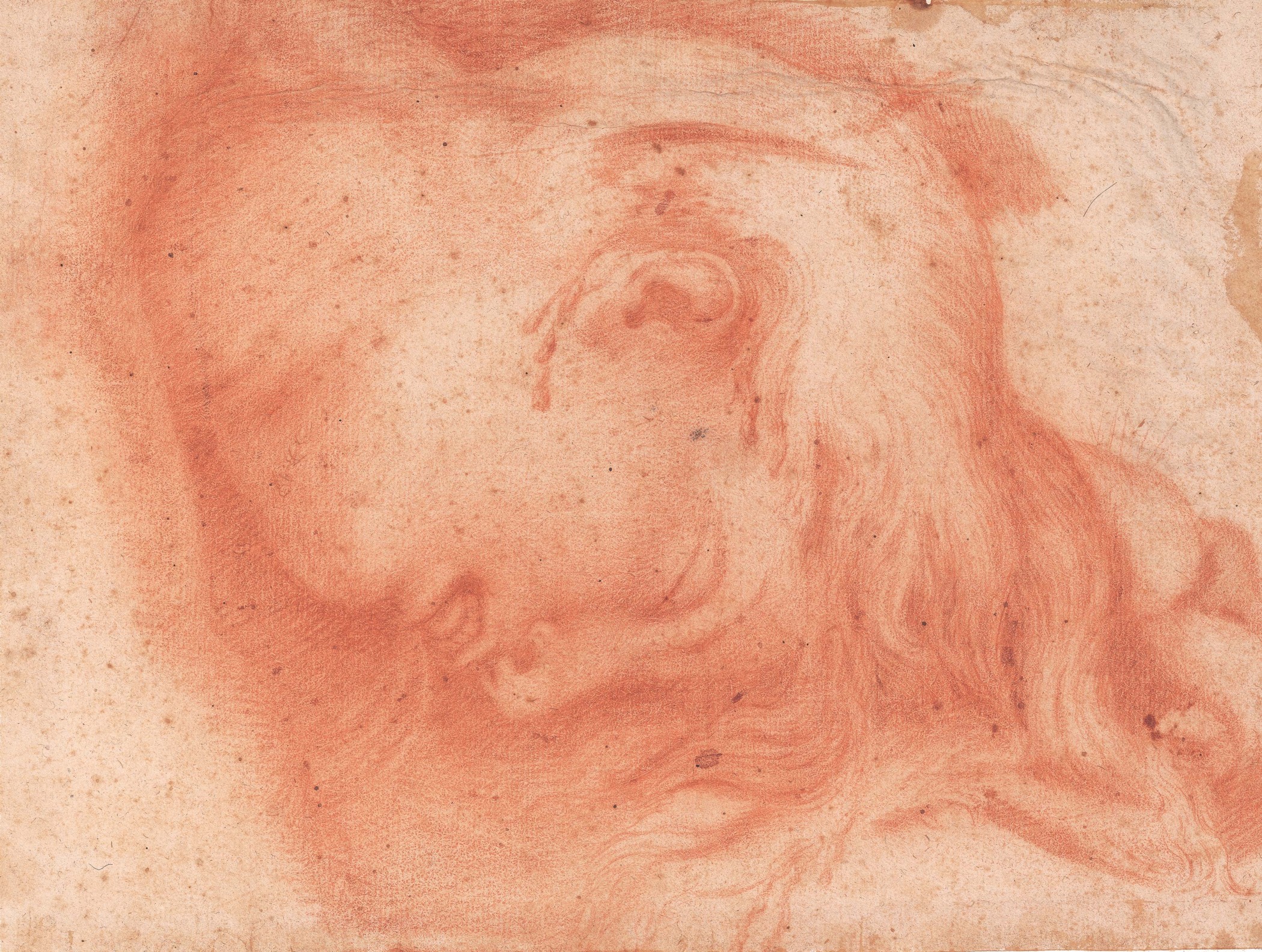Carlo Preda
(Milan, 1651/52 - Milan, 1729)
Study for a S. cecile
Red chalk on paper
239 x 316 mm (94.09 x 124.41 inches)
Carlo Preda
(Milan, 1651/52 - Milan, 1729)
Study for a S. cecile
Red chalk on paper
239 x 316 mm (94.09 x 124.41 inches)
Re: 0171
Provenance: Private collection, Milan
Price: € 1.600,00 - circa US $ 1.744,00
Description:The Saint, still at her young age, is described in the very moment of her martyrdom; the study only sketches the head bowing towards the ground, while a trickle of blood flows under the ear. The figure is recognisable in Saint Cecilia, both for the head's position and for the just inflicted deadly wound. In fact, according to the legend, Cecilia was sentenced to death through beheading, but after the third stroke the sward (three were the strokes agreed with the executioner) her neck was still attached to her shoulders, and she was left to bleed to death. This tradition was then supported by the finding in a sarcophagus, during the 1599 restoration of the church devoted to her in Trastevere (Rome), of her body, still miraculously preserved and in great conditions. Cardinal Paolo Emilio Sfrondati, supervisor of the restoration, commissioned Stefano Maderno the famous sculpture, located under the high altar and the ciborium, on which the artist recorded the saint in the same position as she was found, almost as if she was sleeping. The head's position, slightly turned towards right and laying on a pillow, became canonical in Saint Cecilia's iconography. Saint Cecilia's worship, linked with her being patroness of musicians, had been long supported by the Borromeo family, especially by Cardinal Federico, patron and friend of musicians as well as author of important theoretic texts. Therefore it does not come as a surprise if Milan's painters of the first half of the Seventeenth Century dedicated so many representations to this saint. As for this drawing, although having the same geographical background origin, it is dated in a following period, at the beginning of the Eighteenth Century. The author can be traced back to Carlo Preda, master active during the last quarter of the Seventeenth Century and mainly during the following Century1. Preda, born as the documents show in the last months of 1651 or at the beginning of 16522, trains in Milan with his maternal uncle Federico Bianchi. This man's cultural open-mindedness, always watchful towards Roman painting's development, allowed him to get in touch not only with already canonical texts of the Lombard tradition, from Fifteenth Century's masters to Francesco Cairo, but also with other Italian realities. In particular, Preda, besides continuing the research on Maratta, launched in Milan by his uncle and Filippo Abbiati, approaches the contemporary Genoa's paintings. Connections with the dynamic structure of Gregorio De Ferrari's style, as well as with Bartolomeo Guidobono's more moderate late baroque are evident. Preda seems to follow the example of Guidobono, at the time active in Turin, especially during the first decade of the Eighteenth Century, starting from the Martirio di san Pietro of Broni's parish (1702) up to the Madonna del Suffragio of Caravaggio's Saints Fermo and Rustico's church (1709)3. The two canvasses of the Storie di santa Caterina d'Alessandria of Milan's Sforza Castle's Pinacotheca4 of which we also know the preparatory sketches, and the Assunzione of Lodi's Sant'Agnese and the smaller Allegorie della pittura e della scultura, today in the collections of Merate's ASL (local health authority) date to this period: it is clear that in these pieces of work Preda always repeats the same young girl's figure that we find in our drawing. The open mouth and the expression of pain do not diminish the profile's beauty, almost a Lombard reply to the grace of Arcadia's stories main characters of Giuseppe Chiari's paitings or of the late Maratta in Rome. Nonetheless Preda's syntax continues showing an entirely Seventeenth Century quality and that the author's thought, in this pleasant study, surely went to Saint Rufina's figure of the Quadro delle tre mani, by that time, eighty years later, one of the classic texts of any Milan artist's apprenticeship.

